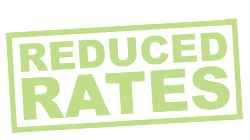How To Qualify For a Mortgage With Altrua
The main affordability formulas that mortgage lenders rely on are known as the Gross Debt Service Ratio (GDS) and Total Debt Service Ratio (TDS). These ratios, which measure Before Tax Income Vs. Expenses, help determine how much house can potentially be afforded and what your maximum mortgage payment could be. The Government of Canada limits these maximums for under 20% down payment mortgages (high ratio mortgages). For 20% or more down payment, there can be more payment flexibility because lenders can use more of their own discretion, and can offer extended amortisation periods of up to 35 years. The GDS and TDS are explained further below:
GDS: The percentage of gross, before tax, annual income required to cover housing expenses only. Housing expenses must be less than 39% of gross income.
- GDS = Monthly housing expenses ONLY (divided by) /gross monthly income
- For example: Mortgage payment @ $ 1000/ month + property taxes @ $200/ month + heating/ air @ $200/ month + fire insurance @ $50/ month = monthly housing expenses of $1,450. Gross monthly income is $5,000.
- GDS = $1,450/$5000 = 29%, which is 10% less than the 39% maximum and fits.
TDS: The percentage of gross annual income required to cover payments associated with housing AND all other debt. This ratio must be less than 44%.
- TDS = Monthly housing expenses + other monthly debt servicing (divided by)/Gross monthly income
- For example: housing expenses = $1,450/mo + car loan = $500/month
- TDS = $1,450+$500/$5,000=39%
So in both example cases, GDS under 39% and TDS under 44%, the applicant fits comfortably in the affordability range.
Guaranteed Hourly Earnings: Typically a lender will want to see a guaranteed minimum amount of hours as a base, and will contact the employer to verify the minimum hours. Any overtime or bonus pay can be used on a 2 year averaged basis using T4 tax slips.
Non-Guaranteed Hourly Earnings: Where the minimum hourly wage can’t be verified, a lender will typically average the last 2 years TOTAL income on the T4 slips and Notice of Assessment Taxable income to arrive at the usable application income.
Self Employed: For Self Employed mortgages, Line 150 on the T1 General Tax Form and Notice of Assessment is used as a 2 year average, and can be ‘grossed up’ from this base amount given the write-off’s inherent in self-employed income. To approve the application properly, T1 General Tax forms and Notice of Assessments over the past 2 years need to be provided up front to your Altrua broker with the application for self-employed mortgages.
There are many unique, wide ranging situations that can be worked with regarding income and Altrua is always able to advise you on exactly how income should be communicated to the lender.
This said, one of the key things to remember regarding credit, is that the score is always changing – and if there have been some mishaps in the past – these can be repaired relatively quickly with the right advice and decisive action.
Typically, a credit score (also known as a ‘Beacon Score’) of 650 or higher will be considered for approval by an ‘A’ lender that provides the low market rates. For the absolute best deals and discounts in the market, often a minimum credit score of 680 is needed.
Credit scores lower than 650 can certainly be approved for a mortgage, but the rate may be slightly higher. The closer to 500 a score gets, the higher the rate and down payment requirement. For low credit mortgages, often a 1 or 2 year mortgage can be approved as a short term solution, and after the 1 or 2 year recovery period, the lowest rates in the market can be applied for at that time.
If you have made your payments on time and had one or more credit lines for the past 3 years then your score will likely be high. If you are are unsure of your credit score – click here to go to Equifax Canada and discover your credit score.
As down payment increases, the CMHC mortgage default insurance is also reduced at each of the following down payment increments: 0%, 5%, 10%, 15%. At 20% down payment, CMHC is typically no longer needed. CMHC fees are added into the mortgage and are not paid upfront by the borrower. Check out CMHC premium amounts here.
At 20% down payment and higher, lenders can use more of their own discretion. At 35% + down payment or equity available, lenders are able to use their maximum discretion on mortgage approvals as Federal Government Regulation becomes more relaxed at this point.
Down payment is weighed with the other pillars – Income and Credit – and is used in combination to make sense of the entire application.
Have Mortgage Questions?
Have a question? Or two? Or more?? Lets us know what you’re looking for and we will get back to you quickly! Our experience and rate buy downs get you the lowest mortgage rates in Online! Let us answer your mortgage questions and get you pointed in the right direction.


